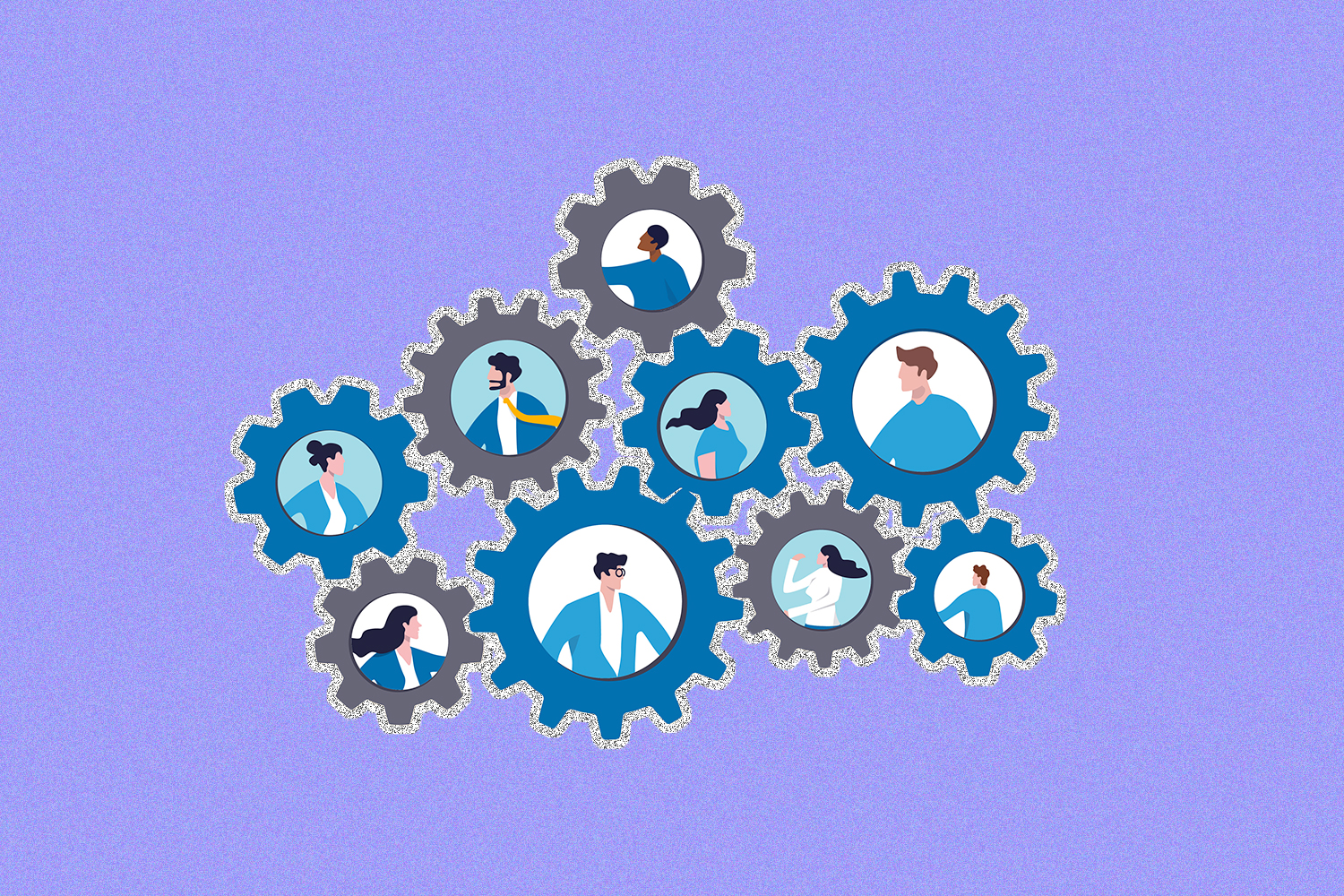Learning and development (L&D) teams that lead engaging onboarding programs to welcome new hires into the organization and prepare them for a successful career have a direct impact on retention rates.
“Research continues to show that a newly hired employee’s decision to stay with a company occurs within their first 90 days,” says Christina Treadway, director of learning and leadership development at financial technology company Black Knight Inc. “It’s up to us to ensure they have the right support.”
In fact, a survey by payroll and HR services firm Paychex found that the onboarding process can make or break the experience at a company for 70% of employees, and remote employees are at an even greater risk of leaving their new roles. If new hire retention is a pain point for your organization, assessing and redeveloping your digital onboarding program is the first place to start.
Treadway explains that L&D leaders can gain buy-in from the C-suite by communicating the cost of losing new recruits. Benchmarking data by the Society for Human Resource Management pegs the cost of a new hire around $4,700, and it can be much more than that. “What makes real sense to them is it’s going to cost you this much to rehire based on the turnover,” says Treadway.
Senior Executive L&D spoke with leaders at five companies about their digital onboarding programs. From those discussions emerged six factors that teams should consider when developing a new onboarding program to deliver a better employee experience.
1. Create a consistent experience company-wide.
If you’re going to develop a new digital onboarding program, you should strive to make it as consistent as possible. Especially for remote, hybrid, and geographically dispersed teams, this consistency increases alignment in company-wide messaging and culture.
Before the pandemic, Paychex, which employs more than 16,000 people, was delivering foundational training inconsistently across the enterprise, explains Erica Toluhi, director of learning and development. To develop a single program for new employees, no matter the business unit or in-office or remote status, the L&D team assessed and vetted 69 different learning modules and created four new ones, consistent in look and feel, on the topics of human capital management, the Paychex marketplace, solutions, and brand.
The Paychex 101: Paychex Foundations program, which launched in March 2022, is a 1.5-hour digital course that’s included in the all-employee onboarding program called Paychex Wayz. New hires complete the training in their first 60 days with the company and have given it an average satisfaction rating of 4.5 out of 5.
Similarly, GoHealth streamlined its onboarding program for consistency this past March. With more than 3,000 fully remote and in-office employees across the U.S. and in Europe and South America, the goal was to provide all departments with the same onboarding experience, which was previously run separately by each team.
“Depending on what department you were joining, they all ran individual departments or line-of-business orientation… [In] some cases we had a day or two of this, but in other cases, it was an hour or two, and that was just not enough. It was not the welcome we wanted to have for our employees,” says Jay Fortuna, VP of learning and organizational development at the online marketplace for Medicare plans.
GoHealth’s new two-day, company-wide employee orientation is facilitated by the L&D department. The training covers the company’s history, mission, and values; its various departments and how they operate; as well as compliance and security training.
After the standardized company orientation, GoHealth employees continue on to a second orientation that’s specific to their job function. This secondary training offers more specific skills, tools, and resources which Fortuna and his team mapped out for all 240 company job titles.
2. Consider first impressions.
An employee’s first welcome message and touch points with your organization set the tone and expectations for the days ahead.
Toluhi advises all L&D leaders to experience the remote onboarding process firsthand to fully see the employee perspective. Her experience of one business unit’s process demonstrated how impersonal a welcome email felt — which led to a standard phone call welcome for new hires.
“Our first interaction shouldn’t be an email,” Toluhi says about a remote employee’s first day. “I just joined the company. I want somebody to greet me; I want someone to be excited that I’ve joined Paychex.”
Another way to set a good first impression is to incorporate a “welcome” touch point even before day one. At tech firm Okta, employees receive their first welcome alongside their laptop.
According to Steve Naclerio, VP and head of Okta University, the company ships its new hires a box with their laptop and a QR code. Once scanned, the code leads new hires to a brief welcome video with information about what to expect as a new employee at Okta. Then on day one of employment, the first hour and a half is a new hire virtual meeting led by the company’s onboarding facilitators.
3. Avoid an information firehose by lengthening the onboarding timeline.
Your new hires don’t need to learn everything about the company and their role on day one. If your company-wide onboarding program is delivered in a short timeframe, make the information available and easy to find for employees to go back to later, such as in an employee handbook or on your intranet. But if possible, consider extending the onboarding timeline.
“At most places I’ve ever been it’s a firehose, and everyone tries to get as much information into your head in the first few days… Your first two days at work are a blur,” says Naclerio.
To avoid an information firehose, Okta’s new hire onboarding experience is 12 months, with company information delivered similar to an email marketing drip campaign — as employees need it and in a way that keeps their attention. This allows employees to dig deeper into a topic as they experience things, rather than having to go back and search for items afterwards.
While compliance training is handled in month one, training related to company culture is delivered later on. For example, volunteering isn’t discussed until month four of employment. Training on the philanthropic Okta for Good program includes how to set up a volunteer event and how to contribute financially.
At Black Knight, the onboarding journey is 12 weeks long. The mortgage software and data firm aligns the length of onboarding with the 90-day timeframe that heavily impacts new hire retention and engagement. The company, which has about 6,500 employees, operates with a mix of in-person and hybrid employees at offices across the U.S., as well as remote employees.
“Originally, we didn’t have any kind of a timeframe [for onboarding],” says Ariel Berger, learning and development supervisor at Black Knight. “[We] kind of threw them in the weeds and sent them so many resources and everything that we thought they needed to have all in their first week, and that can be extremely overwhelming.”
Berger, who led the development of the new onboarding program that launched in June of 2021, says it’s structured to deliver relevant information week by week. Weeks one and two deliver training considered critical, such as compliance training, setting up an email signature, and identifying goals with their manager. Later weeks include training on soft skills, such as how to network and effectively collaborate with team members, and tutorials on various tech tools the company uses.
According to Berger, a big benefit is that the updated program is self paced. “If they finish their first week track really quickly, they can go ahead and finish all of them if they’d like, or if they want to follow the schedule as we have structured it, they can definitely do so,” she adds.
Each week starts with a video that gives an overview of what will be covered, and the links to all related resources are provided. At the end of the week is a video recap and a checklist to ensure employees fulfill all requirements before moving on to the next week.
PRO TIP: Make onboarding training resources available to all everyone, not just new hires. At Black Knight, Berger says these resources are valuable reference materials company-wide.
4. Measure employee satisfaction and collect feedback to gauge onboarding program success.
When it comes to measuring onboarding program success, your organization will likely have its own timeframe. At Okta, Naclerio’s team measures new hires’ job satisfaction at the three-, six-, and 12-month marks of being with the company. To date, all have shown notable improvements from the baseline score of 74% that was established in May 2022 before the launch of the new program:
- At three months: 88% satisfaction, a 14% increase
- At six months: 84% satisfaction, a 10% increase
- At 12 months: 82% satisfaction, an 8% increase
Meanwhile, Black Knight’s L&D team measures the success of the onboarding program through surveys at the one-week mark, one-month mark, and six-month mark. Since the program launched, 98% of new hires have said it has helped them through their first month at the company, and Berger’s team no longer receives feedback from new hires that they’re bombarded with content. In 2022, 97% of new employees reported they were proud to work for the company at the six-month mark.
In addition to satisfaction surveys, provide opportunities for new hires to give their feedback so that you can continue to make improvements to your program. Berger explains that she reviews anonymous feedback monthly with Treadway and leaders of HR, talent acquisition, and talent engagement.
“We’ve been leaning heavily on those three surveys to fill gaps that show up and also measure any successes that we’ve had,” says Berger. In one case, new hire feedback about the daunting number of acronyms used at Black Knight led to the addition of an acronym directory to the program.
5. Involve your new employees’ managers in the onboarding process.
To keep new hires on track with their onboarding, involve managers to provide accountability and ensure team alignment.
At software and information solution company Deltek, hiring managers select a “peer partner” to work with the new hire, and both the manager and peer partner are responsible for checking off tasks on an onboarding toolkit. This toolkit is part of the 90-day Deltek Launch onboarding program, which serves the organization’s estimated 3,000 in-office and fully remote employees worldwide.
Senior director of global learning Jodi Atkinson explains peer partners were added as an accountability layer after they recognized a challenge in getting managers to complete the onboarding toolkits. Manager and peer partner involvement also provides a greater level of support for new employees, adds Atkinson. While managers help the new hire understand how their role connects to company strategy and how to succeed and grow, peer partners review tools and processes with the new hire and help them learn the company culture.
If your managers are unsure of their expected role during onboarding, training is key. At Black Knight, Treadway says managers are equipped with a comprehensive onboarding guide and also participate in a live, instructor-led manager training program. The program covers the company’s recruitment, hiring, and onboarding processes, and takes managers through experiential learning activities and step-by-step videos.
6. Create opportunities for peer-to-peer relationship-building.
Especially for your remote new hires, pairing them with employees that are able to answer questions and provide insights can create an immediate sense of belonging — but take steps to make sure those employees have the knowledge they need.
Black Knight has a “buddy program” that pairs a new hire with an employee on the same team, appointed by the manager. To encourage relationship-building, buddies meet bi-monthly with the L&D team to ask questions and learn about resources they can share with their new hires. One of the resources buddies receive from the L&D team is a guide that suggests weekly conversation starters and topics relevant to the new hire’s self-paced training.
“The buddy is not particularly a mentor…It’s just a person there to help create a relationship, guide them through many common new hire questions that maybe a manager is too busy to answer,” explains Berger.
Black Knight’s new hire surveys show support for the buddy program, with 94% saying they felt welcomed by their buddy and like a part of the team, and 95% saying it made for a better onboarding experience.
Another way to promote peer-to-peer engagement is by intentionally creating cross-team collaboration. The Deltek Launch onboarding program includes “Launch Ambassadors” based on focus group feedback from employees who went through the previous program and said they would have liked more cross-functional support. These ambassadors are business stakeholders across departments, ranging from individual contributors to vice presidents.
Atkinson explains meetings with Launch Ambassadors are scheduled by the peer partner so new hires can better understand each business area and the ways they might work together. This initiative has contributed to increased new hire satisfaction ratings, compared to before the implementation of the Deltek Launch onboarding program, in the areas of:
- Providing support and resources to be effective in their roles
- Providing the necessary information and training to acclimate at the company
- Welcoming new employees and helping them get started in their new job
Encouraging informal peer engagement is also important. At Okta, a Slack channel is established specifically for new hires to communicate and build a sense of community as they learn their new roles. Introducing employee resources groups (ERGs) early in the onboarding can also open up engagement and relationship-building opportunities. Ultimately, finding ways to create connections for your new hires can mean the difference between feeling isolated and experiencing a sense of belonging in your company — a clear indicator of retention.






